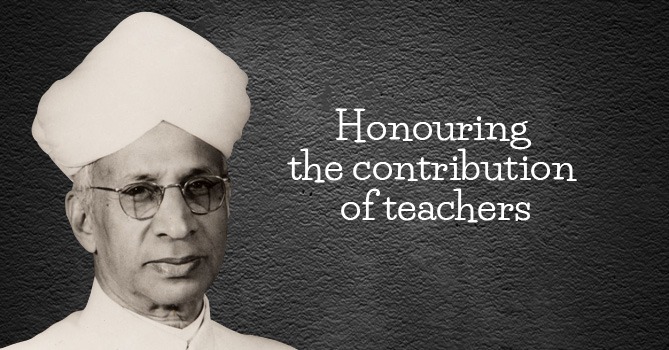


As we celebrate Teachers' Day in India, we honor the life and legacy of Dr. Sarvepalli Radhakrishnan, one of India's most revered scholars, philosophers, and statesmen. His teachings on education and philosophy continue to inspire generations, and his contributions to Hinduism and comparative religion have gained international acclaim. The tradition of celebrating Teachers' Day on September 5 originated from Dr. Radhakrishnan's humble suggestion to honor all teachers instead of just his birthday. Today, Teachers' Day serves as a reminder of the crucial role teachers play in shaping the future of the country and as a tribute to their invaluable contributions.
Teachers' Day in India: Honoring the Legacy of Dr. Sarvepalli Radhakrishnan
Teachers' Day is a special occasion celebrated in India on September 5 to recognize and honor the invaluable role teachers play in shaping the nation's future. This tradition was initiated in honor of Dr. Sarvepalli Radhakrishnan, a revered scholar, philosopher, and statesman who served as the first Vice President (1952-1962) and second President (1962-1967) of India.
Background
Dr. Sarvepalli Radhakrishnan was born on September 5, 1888, in Tiruttani, Tamil Nadu. He was a brilliant student and a distinguished academician, serving as a professor of philosophy at the University of Calcutta and Mysore University. His teachings focused on the importance of education, the universality of religion, and the synthesis of Eastern and Western thought.
In 1949, Dr. Radhakrishnan's students requested that his birthday be celebrated as a day to honor all teachers. However, he humbly declined, suggesting that it be celebrated instead as Teachers' Day. This proposal was widely adopted, and September 5 became a national holiday in India dedicated to honoring the teaching profession.
Significance
Teachers' Day serves as a reminder of the profound impact teachers have on the lives of their students. They not only impart knowledge but also foster critical thinking, inspire creativity, and shape the values and character of the young minds they nurture.
By celebrating Teachers' Day, India expresses its gratitude for the selfless dedication of its educators. It is an opportunity to recognize their contributions, acknowledge their challenges, and highlight the importance of providing support and resources for the teaching community.
Top 5 FAQs
1. Why is Teachers' Day celebrated on September 5?
It is celebrated on this date to honor the birth anniversary of Dr. Sarvepalli Radhakrishnan, the first Vice President and second President of India, who was an ardent advocate for education and teachers.
2. What is the significance of Teachers' Day?
Teachers' Day is an occasion to recognize the immense contribution of teachers to society, acknowledge their challenges, and promote the teaching profession.
3. How is Teachers' Day celebrated in India?
Teachers' Day is celebrated in schools and educational institutions across India. Students express their gratitude to teachers through speeches, performances, gifts, and special activities.
4. What are the current challenges facing the teaching profession in India?
Some challenges faced by teachers in India include large class sizes, inadequate infrastructure, limited training opportunities, and low salaries.
5. What are the past and future trends related to Teachers' Day in India?
In recent years, there has been a growing emphasis on teacher empowerment and professional development. Future trends may include increased use of technology in teaching, improved teacher training programs, and public campaigns to raise awareness of the importance of teachers.

Diwali, the festival of lights, is a celebration of good over evil and light over darkness. This festival is rooted in a rich history of mythological connections, with Hindus commemorating Lord Rama and his victory over the demon king Ravana. However, Diwali is not limited to just one faith - it is celebrated across beliefs and traditions, including Jains, Sikhs, and Newar Buddhists. Festivities and celebrations during this time include illuminations, rituals, feasting, and community gatherings, making it a time of joy, renewal, and gratitude.

Maharashtra Chief Minister Devendra Fadnavis honors the brave officers who sacrificed their lives in an ambush laid by Chinese troops in Ladakh. He pays respects at the martyrs' memorial on Police Commemoration Day, highlighting their inspiration for courage and integrity. The event is observed annually to remember the 10 valiant policemen who lost their lives in the line of duty.

Prime Minister Narendra Modi marked Diwali by joining the armed forces aboard INS Vikrant, India’s indigenous aircraft carrier. A cultural programme on the vessel, showcasing the creative talents of naval personnel, left a lasting impression on the PM. He took to Twitter to express his admiration for the emotional and artistic depth within the armed forces, highlighting the symbolic power of Diwali – light triumphing over darkness – as a reflection of India’s growing strength.

On the sacred occasion of Diwali and the Hindu New Year, His Holiness Mahant Swami Maharaj extended blessings to BAPS followers worldwide. In a handwritten letter, he encouraged individuals to celebrate a Diwali that glows within the soul and radiates throughout society, with lamps of service, humility, and righteousness. He prayed for universal well-being in the New Year and reminded devotees to ignite the flame of virtue in their homes, not just through lighting lamps but also through acts of love, compassion, and service.

This upcoming Diwali in 2025, Indians and Hindu communities around the world will be celebrating amidst a digital revolution. With virtual parties, online shopping, and eco-friendly decorations, technology is transforming the age-old festival into a modern extravaganza. Social media influencers have played a crucial role in promoting the digital celebration, along with the rising environmental consciousness reflected in the use of biodegradable diyas and organic rangoli colours. This 'digital Diwali' not only brings a new level of convenience but also promotes creativity and sustainability.

In 2025, Hindus will be able to celebrate both Narak Chaturdashi and Diwali together on the same day. This coincidence marks a rare event, with the two festivals usually being observed a day apart. Narak Chaturdashi holds special significance in the five-day Diwali festival, and this year, it will be celebrated on Monday, October 20. Hindus believe that lighting the Yam Deep diya during this festival will bring protection from untimely death and negativity.

An explosion at an open cast coal mine in Chhattisgarh's Manendragarh has left at least three workers injured, including two women. According to initial reports, the explosion occurred while workers were preparing for a routine blasting operation. A probe has been launched to determine the cause of the incident, as authorities work to ensure safety measures are in place to prevent future mishaps.

As India celebrates Diwali today, devotees are preparing to perform the auspicious Lakshmi Puja to seek the blessings of the goddess of wealth and prosperity. The most auspicious timings for the puja have been revealed, falling between 7:25 pm and 8:31 pm. This article provides a city-wise breakdown of the muhurat and also highlights other important details for performing the puja on this special day.

Narak Chaturdashi, also known as Chhoti Diwali, is more than just a fancy decoration ritual. It holds deep significance in Hindu beliefs, honoring Lord Yama and seeking protection from negative energies in the coming year. The arrangement and number of diyas have symbolic meanings and a specific auspicious time for lighting them on this particular day. The act of lighting diyas on Narak Chaturdashi is a powerful chain of emotions that brings forth resilience, wisdom, and inner strength, leading to harmony and auspiciousness in the household.

On the occasion of Deepotsav, Ayodhya made history by setting two new Guinness World Records - lighting over 26 lakh diyas and hosting the largest-ever Saryu aarti. The event was organized by the Uttar Pradesh Tourism Department and the Ayodhya District Administration, with the participation of over 30,000 volunteers. The Guinness World Records officials commended the efforts and stated that it was an honor to witness such a grand and spectacular display. The city of Ayodhya also celebrated Diwali with a drone show and a Ram Leela performance, making the event even more special.